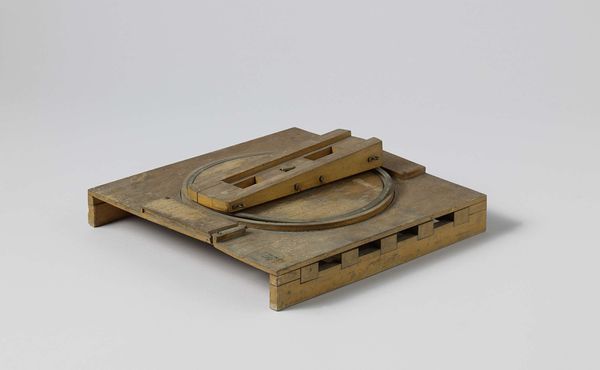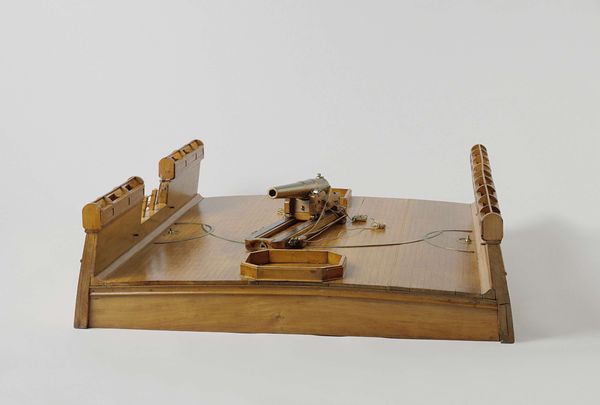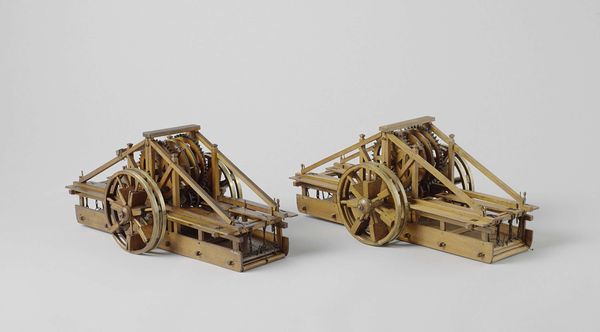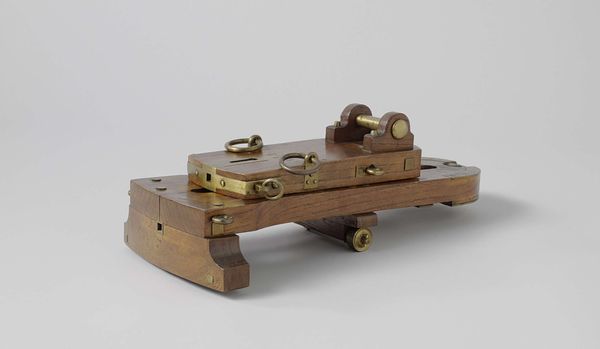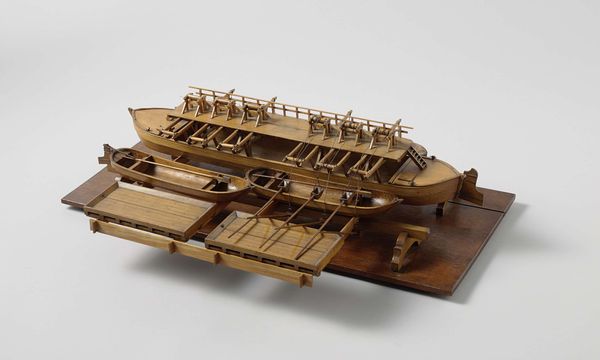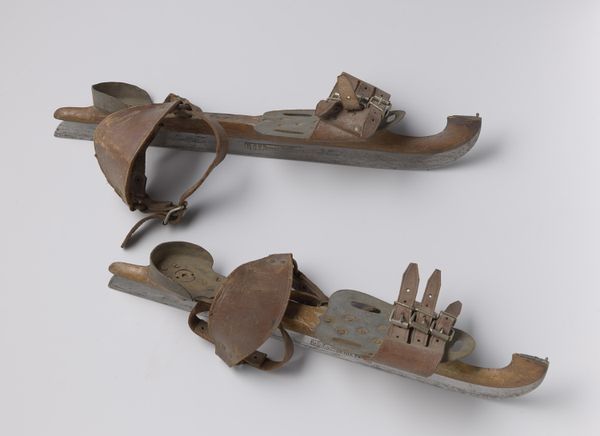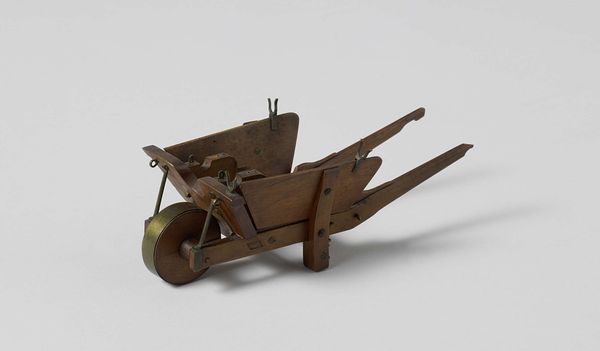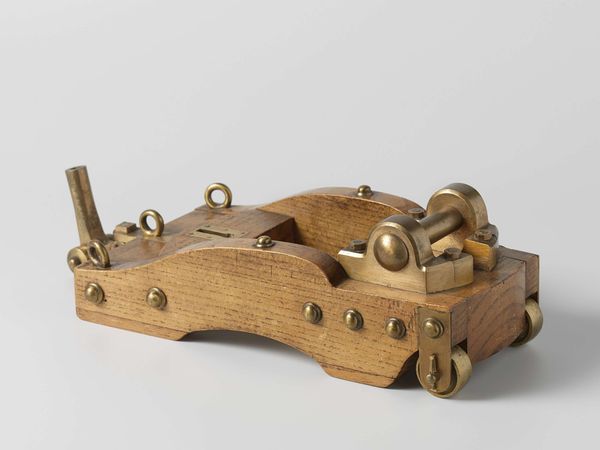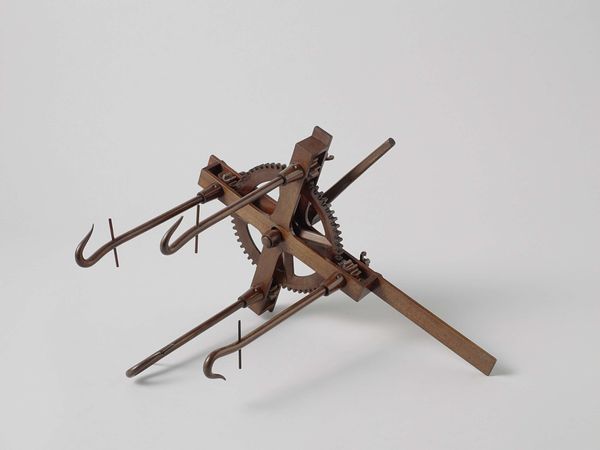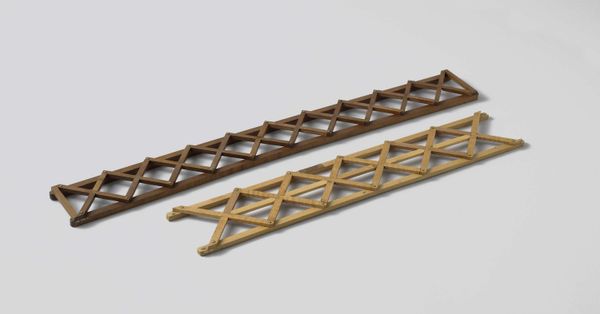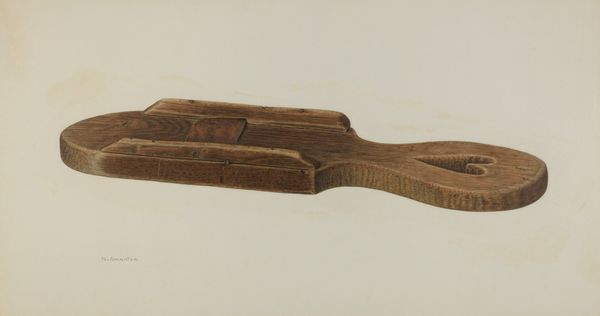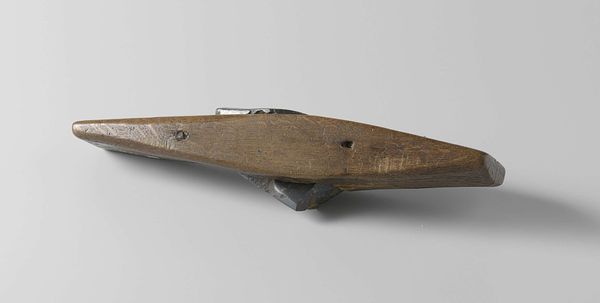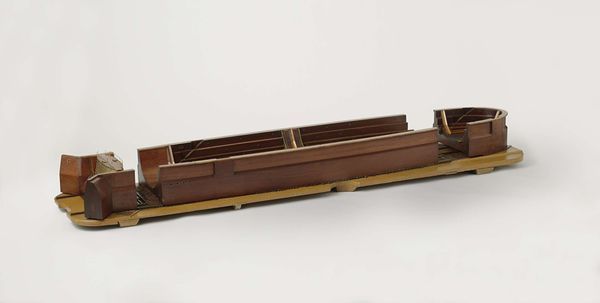
mixed-media, metal, sculpture, wood
#
mixed-media
#
metal
#
geometric
#
sculpture
#
wood
#
mechanical engineering model
Dimensions: height 10 cm, width 52.3 cm, depth 27 cm
Copyright: Rijks Museum: Open Domain
Editor: This mixed-media sculpture from 1864 is a “Model of the Floor and Keel of a Twin Screw Steamer" by H.G. Jansen. It's incredibly detailed! I'm struck by the geometric shapes and the visible joints and supports; it almost feels like a skeleton. What does this piece bring to your mind? Curator: Seeing this skeletal structure of a ship from the mid-19th century invites a critical examination of the maritime industry's impact during that era. This was a time of intense industrial expansion and globalization, heavily reliant on seafaring for trade, colonization, and, tragically, the transatlantic slave trade. We have to consider who benefited from this "progress" and who was exploited in its name. Editor: So you see a link between this model and larger issues of colonialism and labor? Curator: Absolutely. Ships were not just vessels of commerce; they were tools of empire. When we look at the construction and the details of this model, it becomes clear that this kind of ship represented a significant advancement, but at what cost? Who built it, and under what conditions? Editor: That's a really interesting perspective that I hadn't considered. It reframes my initial reaction completely. It becomes less about aesthetic form and more about ethical implications. Curator: Exactly! The beauty of art, even in something seemingly as simple as a ship model, lies in its capacity to reveal hidden histories and challenge us to think critically about progress and power. Thinking about it makes one wonder who has a ship named after them, and how that reflects on who history decides to immortalize and what legacy. Editor: I think that focusing on the legacy of these constructions encourages engagement in dialogue about how historical trade practices reflect and influence global relations of today. Curator: I couldn't agree more, and it's conversations like these that hopefully create further interest into social issues related to industrialism and legacies of colonialism.
Comments
No comments
Be the first to comment and join the conversation on the ultimate creative platform.
